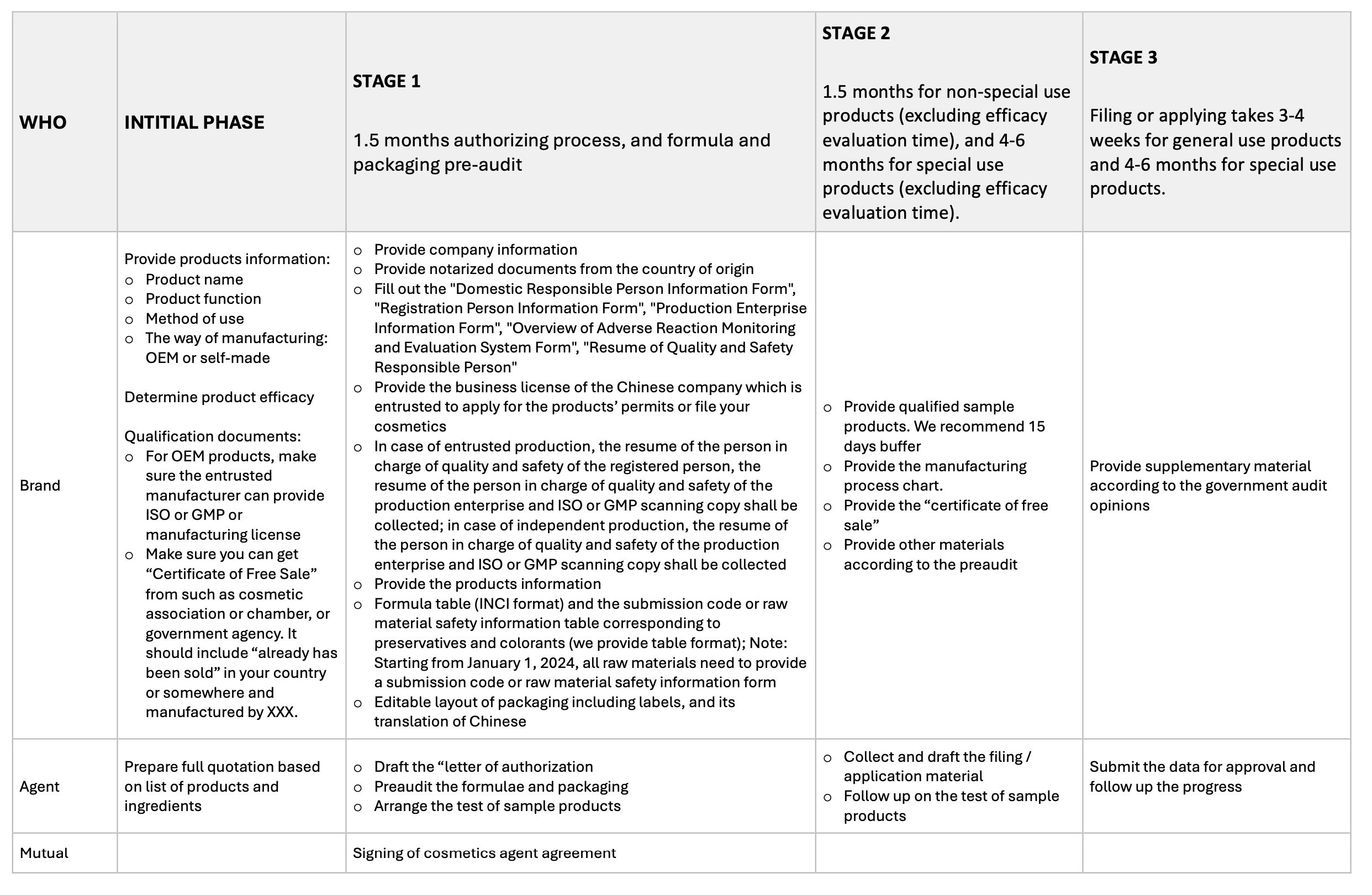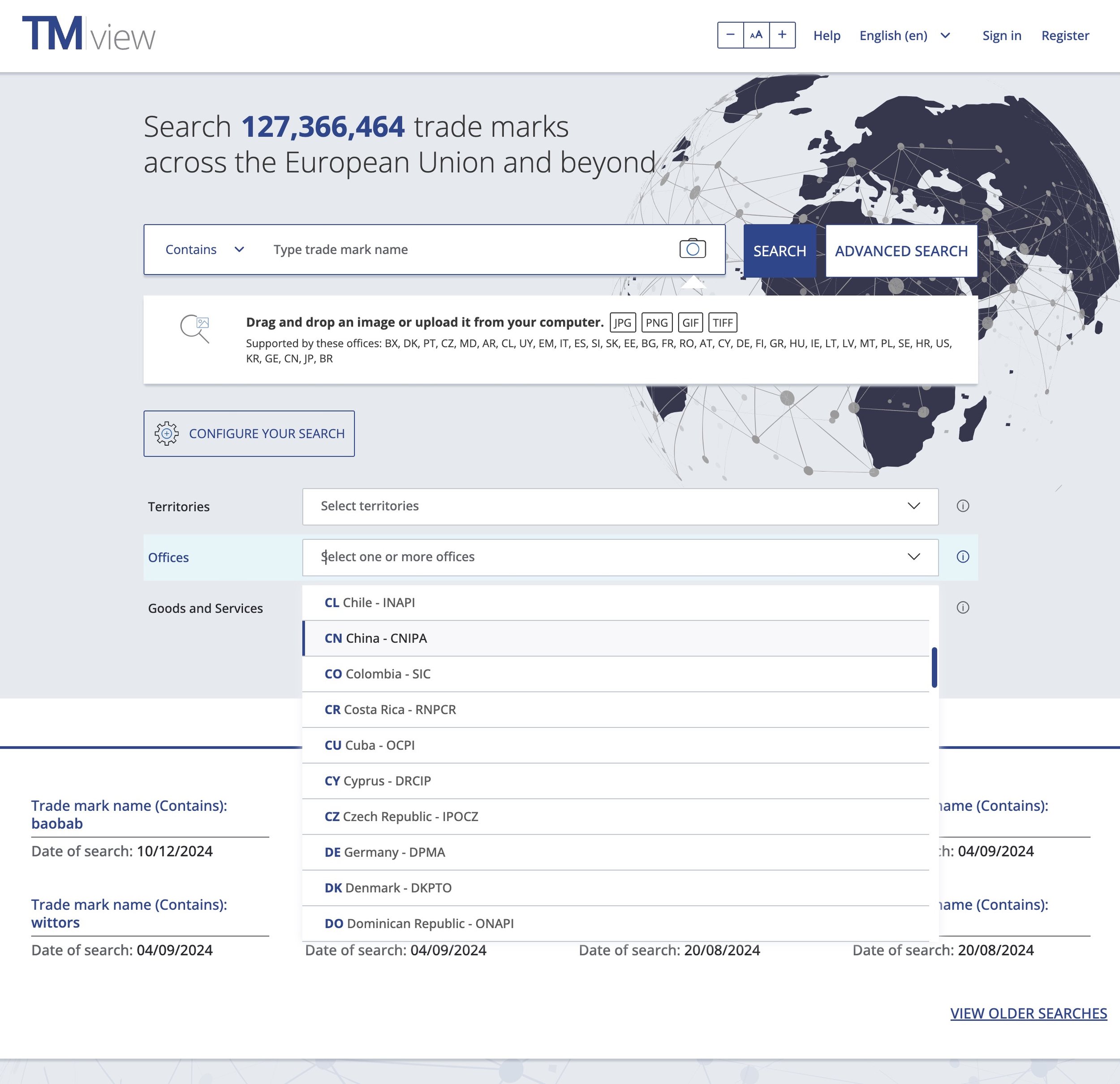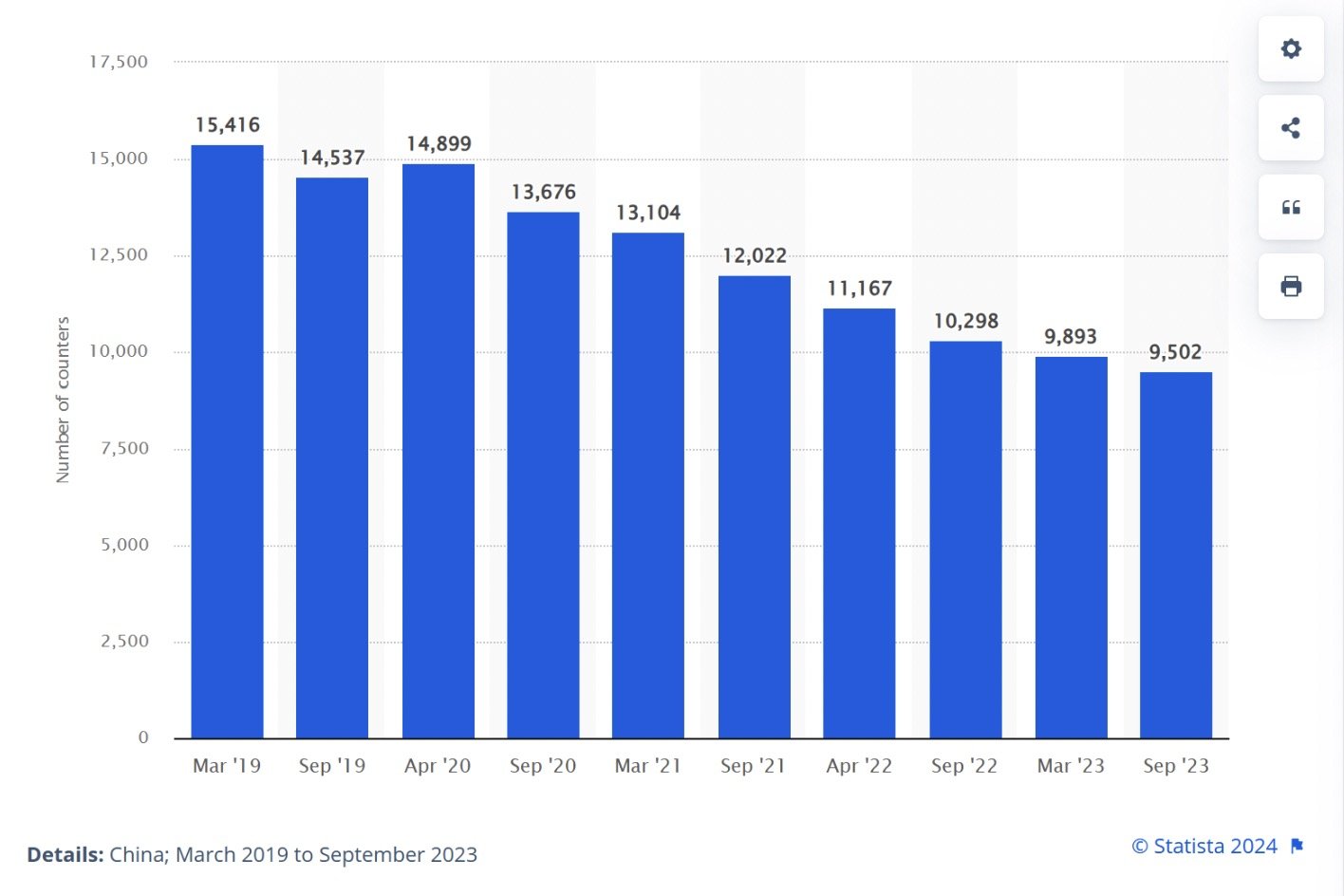Руководство по продаже косметики в Китае
Несмотря на недавние экономические проблемы, китайский косметический рынок продолжает расти, открывая хорошие возможности для иностранных брендов. Как же иностранные бренды могут освоить этот рынок?
Let's define our scope from the outset:
By cosmetics, we refer to a diverse range of products including face and body creams, serums, perfumes, and other beauty products. Looking at the breakdown below of these categories, skincare products clearly hold the number one position with two-thirds of the market share, followed by color cosmetics, body care, cleansing products, and fragrance. Fragrance, historically a small market in China, is one of the fastest-growing segments of the market today.
Retail sales distribution of cosmetic products by category in 2023.
This guide is primarily written for small to medium-sized cosmetics brands seeking to enter the market strategically and sustainably, with a focus on gradual growth and long-term sales.
#1: Are There Still Opportunities in China for an Imported Brand?
Yes, despite China's real estate crisis causing an overall slowdown and Chinese consumers increasingly choosing homegrown brands, which have significantly improved in quality and branding in recent years, the demand for high-quality and innovative foreign cosmetics remains strong. Per capita spending on beauty and cosmetic products in China doubled between 2017 and 2022 and is expected to grow by another 50% by 2025.
Cosmetics retail sales in China from 2018 to 2023, with projections until 2028.
The Chinese consumers are still wary of local brands due to past scandals and quality issues. Foreign cosmetics brands benefit from being perceived as higher quality and safer. Surveys show that safety is the main reason people prefer foreign brands over Chinese ones.
Today, approximately half of the revenue from cosmetic retail sales comes from Chinese brands, followed by 30% from Europe and the US, with the rest mainly from neighboring Asian countries.
Retail sales distribution of cosmetics products in China in 2023 by brand origin.
Notably, Chinese brands primarily occupy the low to mid-tier market, while imported brands dominate the high-end and luxury segments. Imported brands cannot compete with local Chinese brands on price due to import logistics, taxes, and higher production and labor costs abroad. It may seem obvious, but imported brands should aim to enter the mid-luxury segment and focus on quality and efficacy rather than price.
#2: Cosmetics Certification and Animal Testing
There are two sales methods for selling to China:
1) Cross-border sales: This involves shipping directly from abroad or from a bonded warehouse through your own brand website or a Chinese cross-border e-commerce platform like Tmall Global. Offline sales are restricted to duty-free shops. In this method, a cosmetics certification from your home country is sufficient.
2) Domestic sales: This allows selling on any Chinese online channel as well as offline. However, full cosmetics certification in China is required.
To sell domestically in China, obtaining Chinese cosmetics certification is mandatory. The specifics of this process vary by product category and typically take 3 to 10 months. Costs also vary based on category and efficacy claims, so choosing which products to import and what efficacy claims to make is crucial, as it directly impacts costs. Generally, special-use products, such as sunscreens or hair dyes, require a more extensive and costly certification process. Whether multiple products can be covered by a single certification depends on the shared ingredients, which should be carefully considered during the strategy phase.
The China cosmetics certification is a complex, multi-step process that can take several months. Requirements include appointing a responsible person in China who will guarantee the claims made and manage the application process, preliminary review, and testing.
Example of a non-special use cosmetics certification process timeline, documentation, and responsibilities.
Historically, China required all products to undergo animal testing, posing a challenge to brands committed to cruelty-free practices. This changed about four years ago; China no longer requires animal testing for non-special-use cosmetics if extended paperwork from the home country is provided or alternative testing methods are used. This requirement is specific to the product and country of origin and must be verified on a case-by-case basis though.
#3: Trademark and Name
Opening any online channel requires owning a brand trademark, as do offline sales in major shops and shopping malls.
Cross-border sales require a registered trademark in the brand's home country, while domestic sales require one registered in China. Regardless of the sales channel, it is highly recommend registering a trademark in China. Any sales success might inspire others to register your brand name, potentially leading to counterfeit sales or attempts to extort the brand by selling the name at a high price.
Trademarks can be registered through the international WIPO system, which is expensive and slow, or directly in China at CNIPA via an agency. In either case, the trademark should be owned directly by the brand. Allowing an agent or distributor to register the mark under their own company should be avoided. This should be clearly stated in the contract.
The registered name should be the original brand name in English to reflect the brand's heritage and origins. Additionally, creating a Chinese name is advisable, as it will be easier for Chinese customers to remember and type. Both names should be used in all marketing efforts to establish a mental connection between these names in customers' minds.
Considering that the registration process for a trademark in China takes anywhere from 8 to 12 months, it is important to start as soon as possible to avoid delays. China's "first to file" system means that whoever registers first has the right to the name. Therefore, it is highly recommended to register even before you fully commit to selling in China to avoid potential issues later on.
#4: Should the Market Entry Be Led by the Distributor or the Brand?
This is a big one. Many brands hope to find a Chinese distributor who will manage everything for them and deliver neat wholesale orders. Unfortunately, the reality is more complex. First, small and medium enterprises (SMEs) often struggle to attract high-quality distributors willing to invest in the brand to drive sales and long-term brand awareness. More often than not, the distributor will simply place the new brand on the shelves of their online or offline store and leave it at that.
Here are a few real-life examples of what can happen: link.
An alternative is a brand-led market entry, where the brand opens its own flagship store online and possibly offline, investing in its own marketing. This approach is excellent for building the brand in China and maintaining a comprehensive overview of operations, but it is costly and time-consuming, posing challenges for SMEs.
A third option is a combination of the two, where the brand takes the lead on its own marketing while a partner manages the rest of the project.
Which option is best? It depends. Different companies are in various positions regarding what they can afford to spend, the size of the markets they are targeting, their existing brand awareness in China, and the distributors willing to work with them. All these factors are crucial in making the right decision.
#5: Sales Channels
Some questions to consider are:
Sell Cross-Border or Domestic? This decision affects where the brand can sell and which online platforms it can collaborate with. It typically depends on the willingness to obtain cosmetics certification and register local trademarks at this early stage. Most cosmetics brands begin with cross-border sales to test market reactions. If successful, they consider certifying their best-sellers later and start selling domestically, both offline and through domestic e-commerce channels, which are subject to a different taxation regime.
A bonded warehouse can be physically located in China, but legally it is considered outside the country. The brand ships products to the bonded warehouse, and goods are taxed only at the time of purchase by the customer. Instead of the regular VAT, import tax, and luxury tax, there is a single unified tax calculated from the end customer's purchase price.
Online First or Offline First? Brands should aim to do both. The question is how much time and investment to allocate to each. Most foreign cosmetics brands are familiar with offline sales through third-party shops and department stores and wish to replicate this in China with small shops placing wholesale orders. They are always surprised to learn that in China, the offline market operates differently, with most shops being single-brand, and multi-brand shops being far less common than in Europe or the US. Additionally, cosmetics brands often generate higher revenues online than offline due to the Chinese population's strong preference for online shopping. For SMEs, the best approach is usually to start online and experiment with offline sales on the side rather than investing heavily in offline from the beginning.
One way to illustrate the declining importance of offline distribution in cosmetics is by examining the number of cosmetics counters between 2019 and 2023, which shows a clear downward trend. The beneficiary of this shift are online sales channels.
Number of cosmetic counters in China from 2019 to 2023.
Alibaba's Taobao and Tmall dominate online sales, making up about half of all e-commerce transactions in China, with an even larger share in high-end and luxury goods. JD, Pinduoduo, and social e-commerce platforms like Little Red Book and Douyin account for the remainder.
Distribution of the gross merchandise volume (GMV) of China's online cosmetics market in 2023 by e-commerce platform.
As a brand, opening a brand flagship store is essential. This means a store registered under the brand name selling only the brand's products. Given Tmall's dominant position among brand stores, it's the best option to start with Tmall Global (cross-border) or Tmall for (domestic). More about the Tmall ecosystem here.
An alternative to a brand flagship store are multi-brand stores that sell multiple brands within a specific category of products. You can try to find partners, typically distributors of multiple brands, willing to add your brand to their online shelves. However, selling through such channels doesn't improve brand awareness and is more suitable as a testing ground or a support channel rather than a long-term sales platform.
#6 Marketing
Any sales channels must be supported by effective marketing on Chinese social media. Since the Chinese internet is largely isolated from the rest of the world, with platforms like Facebook, Instagram, and YouTube being blocked, establishing a local social media presence is essential. The top platforms are Little Red Book (similar to Instagram), Douyin (the Chinese version of TikTok), and WeChat. Regular posting, at least weekly, is a solid starting point.
Influencers are the most important marketing tool in China. A good starting point is to collaborate with 100 small Key Opinion Consumers (KOCs) to create plenty of content on Little Red Book, 10 small Key Opinion Leaders (KOLs) to drive traffic and some sales, and 1 large KOL to convert people to sales and put the brand on the map. From there, more influencers should be willing to collaborate, as well as live streamers who can generate sales with only small fixed costs. Remember, it's a relationship—bloggers who charge a lot will always be happy to post, but this is not a sustainable way to generate sales as the ROI on these posts often doesn't reach 1. Live streamers and bloggers willing to substitute part of their fee with sales commission must see high enough sales revenue to justify working with the brand.
Branding and product quality are essential for success—no matter the sales channel, you can't sustainably sell a product that doesn't appeal to the Chinese audience.
Offline attendance at cosmetics exhibitions is a great way to connect with local agents and distributors. Negotiations with them can be lengthy—it's a long-term commitment. Regular trade fair attendance is necessary to see results, as potential distributors want to see that the brand is serious about its presence in China, and repeatedly seeing it at trade shows and various events is key.
China International Beauty Expo is one of the major cosmetics exhibitions in China, taking place several times a year.
It goes without saying that continuous e-commerce search and homepage ads are a must.
Consider how to allocate the budget across all these tools, which will evolve over time. Most of the marketing budget in the early days should go towards influencer marketing, which will always represent the largest piece of the pie, but other social media and e-commerce ads will proportionately grow over time.









